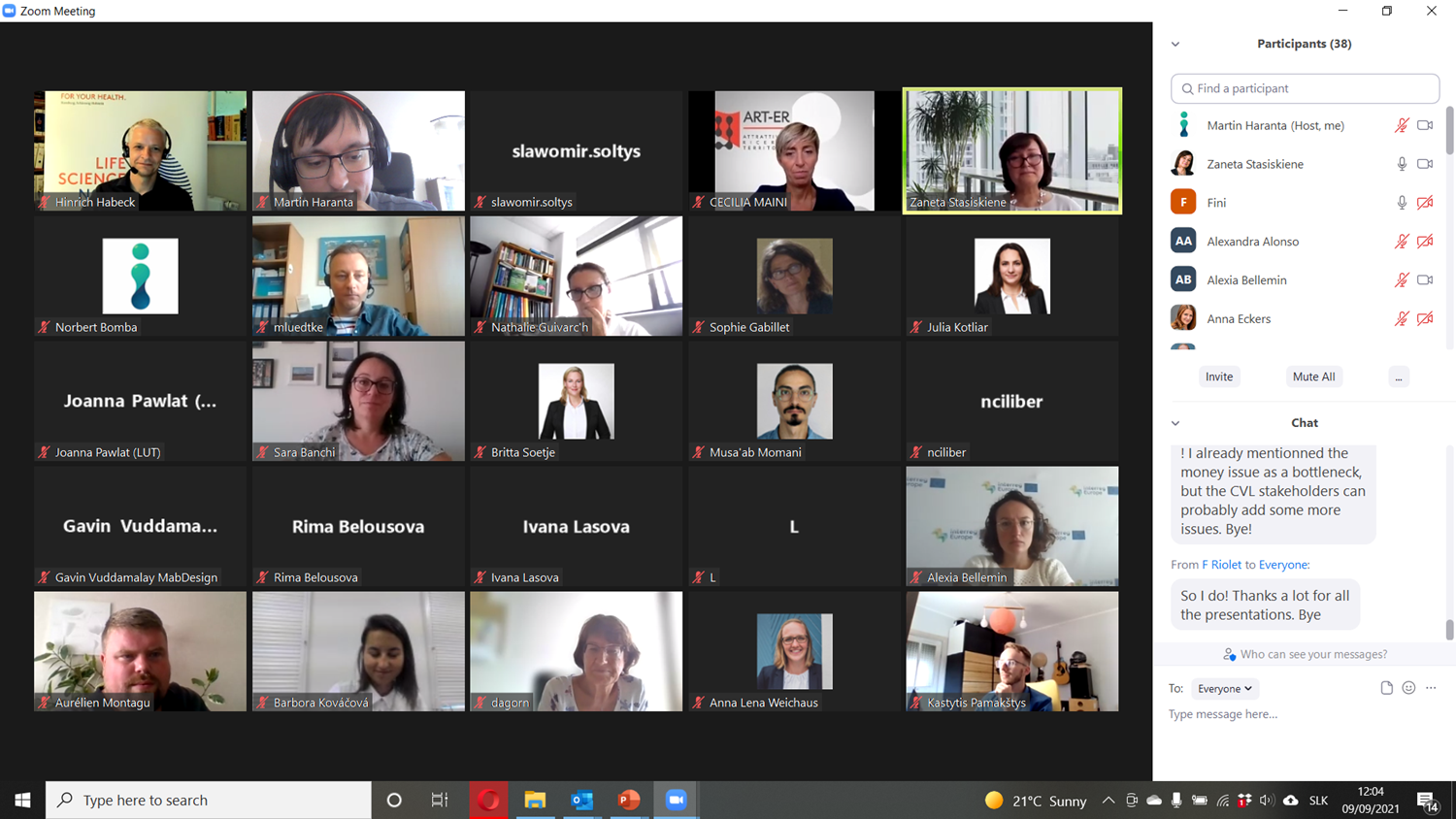
Final event of ELISE
The final conference of ELISE with tagline: Innovation ecosystem – the key tool for the regional development in the 21st. century was held online on 9.9.2021.
ELISE addresses a societal challenge common to European regions: to promote better health and life for all. This covers the need to improve health and well-being outcomes and promote healthy and active ageing, but also to promote market growth, job creation, EU competiveness.
ELISE partners from 7 regions believe that the concrete application of the Ecosystem concept at regional and interregional level can help to address these constraints. An ecosystem groups business, researchers, clinicians and patients to translate discovery into clinical use for medical innovation in health service that ultimately improves health of the European
€1,217,494.00
Research and innovation
Partner visits and study exchanges showed to ELISE partners, how to improve their regional life science ecosystem. Every partner presented good practices from their region and the best of them were transferred and adjusted for the needs of ecosystems in regions of the partner of the project.
You can find selection of the most relevant good practices here. 2 of the good practices stand out from others based on their utility for partners:
1. SPARK - concept for innovation workshop that can enable further development at the axis academia-industry - SPARK was inspiration for multiple Action plans
2. Technology and Innovation Consultant - easily transferable practice not only for ELISE partners, but to any organisation that would like to improve cooperation between academia and industry. It focuses on development of pro companies oriented professional within the universities
Action Plans
Each of the partner region created action plan for development of its respective innovation ecosystem. 7 Action plans were approved by INTERREG Europe and are currently being put into practice and monitored within the scope of the phase 2 of ELISE project. You can find below brief description of action plan and you can click here to access full version.
ELISE focuses on Axis 1 Fostering research, technological development and innovation. The objectives are to support existing and new R,TD&I; increase R,TD&I activities in private business sector; increase knowledge commercialisation and technology transfer. The programme funds projects in line with these objects, with the expected results being: investments of the business sector per citizen; increased percentage of innovative companies actively collaborating with partners; increased possibility for businesses to use open access research infrastructure.
Of particular relevance to the ELISE project are the priorities corresponding to improvement of Research and innovation infrastructure and development of new Centres of Excellence. This priority should use current and newly developed measures more effectively. Initial results of priority areas are promising.
However, collaboration between private and public sectors needs to be more effective, especially in terms of developing infrastructure for the commercialisation of the knowledge and involvement of Lithuanian researches in EU infrastructure (especially ESFRI). With a specific focus on innovation in health care, it is important to transform health service areas to higher levels in terms of technology and services. The Centre of Excellence for health should invest in collaborative R,TD&I related to molecular technologies, advance applied technologies and advanced medical engineering.
The policy instrument is the ERDF ROP Action 1.2.2 ‘Support to R&D projects on relevant topics and application of technological solutions necessary to achieve the S3 strategy’, Strategic Objective 1.2. ‘Strengthening of regional and national innovative system’ within Priority Axis 1.
The focus is on iimplementing R&D projects in selected thematic areas to build a stronger link between research laboratories and companies to promote R&TI. The final aim is to strengthen the regional productive system. The instrument addresses research laboratories collaborating with companies to undertake strategic, large-scale research projects. These projects should: develop and test KETs, target technological results to regional production chain needs, create prototypes and technology demonstrators, industrialise research results.
A number of necessary improvements are noted in the Life Science sector. Applied research labs in this field, part of the regional High Technology Network, must strengthen links and synergies locally and at international level. They must find ways to exploit existing potential to develop new technologies and contribute to bringing research results to the market. A stronger connection with the productive system, a better internal organisation and a possible enlargement to new actors and partners are needed. Through ELISE and the Ecosystem, the main expected improvement is capitalisation on existing assets and creating new ones, in the framework of S3 priorities.
The policy instrument is based on RIS KSR which aims to promote 1. Excellency in R&D, 2. Commercialisation R&D; 3. Support of innovative business and main potential industry; 4. Excellent human resources for increasing of innovative and ecological performance of the region. These 4 objectives are all in line with the concept of a regional ecosystem. Biomedicine and Biotechnology are one of the four main focuses of the RIS. KSR approves investment in the field of medicinal technology and healthcare.
Within ERDF OP Axis 1, Investment priority 1.1 specifically focuses on expanding research and innovation infrastructure and capacities to develop excellence in research and innovation. Its specific target is to increase the efficiency of R&D through horizontal support of technology transfer and ICT. In this sense, expected results are increased performance of R&D, increased activity of public stakeholders in R&D and, consequently, increased economic growth in the region.
In terms of necessary improvements, the policy instrument lacks depth in the issue of developing a suitable environment for to support innovative SMEs. It is also limited in its support of connection between life science stakeholders. This is a national level issue: across Slovakia connections between government, academia, industry and civil society is very weak and vague. Kosice participates in ELISE as a region hoping to address this challenge, through the creation of a regional Ecosystem.
The specific objectives of the selected policy instrument are:
1) developing territorial capital,
2) strengthening R&I system based on quadruple helix cooperation,
3) incorporating the region into global innovation chain,
4) developing effective innovation and competitiveness support instruments, and
5) stimulating dynamic advantages of the location.
RIS LV 2020 elaborates in detail the Development Strategy of the Lubelskie Voivodeship (2020) in the section dedicated to the development of R&I for smart specialisation. It supports selective, smart specialisation-based development model of the Voivodeship based on creative innovation. Smart specialisation (SS) areas: bioeconomy, medicine and health, low-carbon energy, IT and automation.
RIS LV 2020 Priorities corresponding to the scope of ELISE are: Pr1. Increasing the ability of business entities to create and absorb knowledge and to implement innovations, particularly in regional areas of smart specialisation, Pr2. Increasing the ability of science and research sector to create and commercialise knowledge in regional areas of smart specialisation. SS areas covered by the scope of the project are bioeconomy and medicine & health.
Improvement needs of RIS LV 2020 include:
1) increasing added value in the bioeconomy and in medicine and health;
2) enabling effective cooperation platforms for representatives of the quadruple helix;
3) enhancing better RIS LV 2020 implementation.
The overall objective of Axis 1 of the Policy Instrument is to increase scientific potential, visibility and attractiveness of the 5 RIS3 Strategic Domains (SD) - including SD2 Biotechnology and services applied to pharmaceutics and cosmetics. The policy should focus public resources and stimulating private investment.
Through 2 specific measures, programme funds acquisition and coordinated use of scientific instruments and strategic projects lead by public and/or private R&D entities. The expected results are to increase of the number of researchers in the SDs (including SD2), development of instrumental capabilities, eased access to European partnership and programmes, development of public / private cooperation. These are all results that an ecosystem framework could support.
Initial results in the 5 SDs are promising but cooperation between laboratories, SMEs and larger companies needs to be further developed. With that respect, specific measures need to be taken in each of the SD (including SD2) taking into account the specificities of the domain being addressed, rather that a '1 size fits all' approach.. A specific interest should be devoted to building capacity and skills and to high-tech start-up companies and possible actions to support their development. The policy does not currently directly focus on bioethical issues, which are of growing importance in healthcare innovation.
The Regional Innovation strategy of Mecklenburg-Vorpommern has a thematic objective on Life Science. Related objectives in the policy instrument are to increase R&D activity of the Life Science industry in Mecklenburg-Vorpommern, in particular SMEs and to improve cooperation between companies and public research institutions/ universities in applied research, development and innovation.
The policy funds support for: R&D activities for internationally marketable products and processes, and technical feasibility studies; young innovative enterprises; process and organisational innovation; innovation advisory services and innovation support services and IPR activities of SMEs; supervision and management support of innovative, technology-oriented start-ups and young companies in connection with the provision of Capital.
Expected results are significant increase of number of funded research projects and private investments in SMEs; rising number of start-ups; rising number of companies cooperating with research institutes, rising number of funded networks and participants.
Initial progress in collaboration is promising, but there is a lack of intersectoral collaboration. R & D expenditure in the region, as well as other innovation performance indicators, are well below the national average. There are gaps in knowledge and technology transfer and third party funds from the economy remain insufficient. Further development of the existing clusters in Life Science is required.
The policy instrument is the OP for the city-region of Hamburg. This aims to foster Research, Development and Innovation especially in the context of SMEs; Sustainable Employment; Reduction of CO2-emissions.
It funds: R&D activities for innovative products and processes, and technical feasibility studies; young innovative enterprises and SMEs; process and organisational innovation; innovation advisory services and innovation support services including cluster structures and existing networks.
The expected results are: significant increase of the number of funded research projects in the context of SME's and innovative industry; increased innovative potential of clusters; increased number of companies cooperating with research institutes; increased number of funded networks and of participants.
Clusters exist, but the policy instrument could be improved by a further move towards the market-orientated, collaborative Ecosystem concept.
Moreover, with the existing policy instrument it is not possible to use and fund additive competences of neighbouring RIS regions. Partner 8 covers Hamburg and Schleswig-Holstein regions, both of whom have prioritises Life Science and Health Care. Thus, Partner 8 also expects to influence the Schleswig-Holstein POR, which has similar priorities and faces similar challenges. Indeed, they received an addition LoS for that purpose. ELISE is a chance to harmonise innovation strategies and policies, to use strengths and potentials of other regions.

The final conference of ELISE with tagline: Innovation ecosystem – the key tool for the regional development in the 21st. century was held online on 9.9.2021.

Meet the speakers for: Innovation ecosystem – the key tool for the regional development in the 21st. century

Better Life Science ecosystems in Lithuania, France and Slovakia, thanks to ELISE

Better Life Science ecosystems in Germany, thanks to ELISE

Better Life Science ecosystems in Italy and Poland, thanks to ELISE
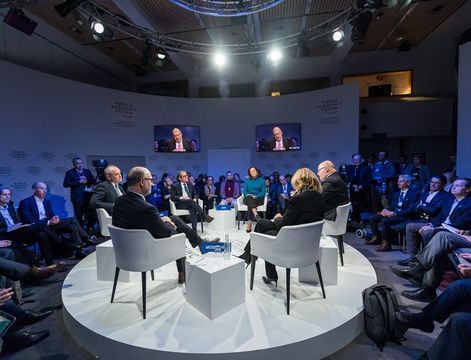
The last event of ELISE project called Innovation ecosystem – the key tool for the regional development in the 21st. century will be held online 9.9.2021.
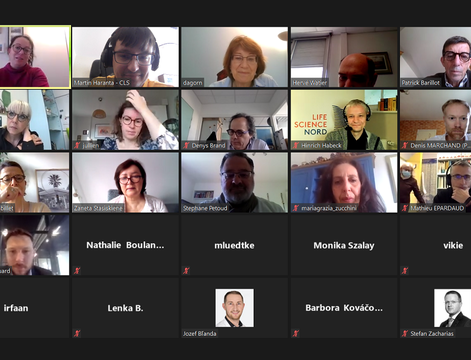
Online workshop was organised by Centre-Val de Loire with the focus on response of its life science ecosystem on COVID-19 crisis.
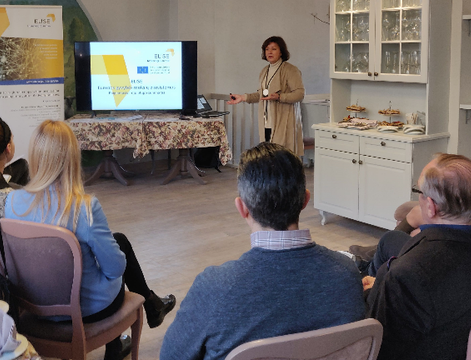
Kaunas University of Technology (Lithuania) started to implement their action plan.

ART-ER (Italy) started to implement their action plan.
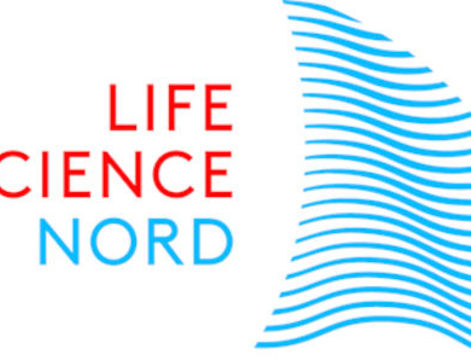
Life Science Nord (Germany) started to implement their action plan.